Book Review: Can-Am Cars In Detail

Handed out to undeserved recipients and devalued by lazy writers alike, few words are as hackneyed as iconic or legendary. If everything is an iconic legend, nothing is. Sometimes, though, the words are exactly appropriate. The Canadian American Challenge Cup racing series which ran from 1966 to 1974, more popularly known simply as Can-Am, included cars and drivers that are truly iconic and the series was genuinely the stuff of legend. Though the big block V8 engines of Can-Am last roared over 35 years ago, even today the name Can-Am resonates strongly with car enthusiasts.
Attracted by an almost unlimited technical formula and some of the era’s richest purses, the world’s most innovative constructors and talented drivers flocked to the series. Team owners that have since succeeded in other series like Roger Penske, Jim Hall, Paul Newman and Carl Haas, were active in Can-Am. This was when drivers were not specialists who only raced in this or that series, and many of the Can-Am drivers also raced in Formula One. Not only were some of the drivers the same in both F1 and Can-Am, the two series also raced on some of the same tracks. The Can-Am cars were so technologically advanced, so powerful and so fast that the F1 drivers typically set faster times with their Can-Am cars than with their F1 rides. The series produced technical advancements that still impact racing. Can-Am was so larger than life, that it eventually produced the most powerful car ever designed to race on a closed course, a car which so dominated the series, it is said to have killed that very racing series that spawned it. As I said, the stuff of legend.
Befitting such a larger than life subject, one of the truly golden ages of 20th century auto racing, David Bull Publishing has released Can-Am Cars In Detail: Machines And Minds Racing Unrestrained, with photos by Peter Harholdt and text by respected racing journalist Pete Lyons. It’s a large format book, ~ 11″X11″, hardcover, 244 pages, with a slip case. Noted in passing is that this is yet another graphically rich book printed in China. Apparently the publishing industry is outsourcing to China too.
Because of the large format I’m tempted to call CACID a coffee table book but that would be doing Lyons and Harholdt and their publisher a huge disservice. Yes the book has gorgeous, large photographs of 22 of the coolest cars ever built, all either restored, as-raced or in one case, recreated, but it’s much more than a picture book. CACID gives a vivid sense of what Can-Am was like, showing the variety of cars raced (with their achievements or lack thereof), and their chronological development. What makes CACID different than more cursory looks at Can-Am is that in addition to the legendary Can-Am cars that everyone recognizes, like the Chaparral 2E, Lola T70, McLaren 6 and 8 models, and Porsche 917s, there are lesser remembered marques like Genie, Caldwell, McKee and Honker. Honker? There are cars that won races and championships, cars that were innovative but not very successful, and some backmarkers as well. Lyons and Harholdt’s selection of cars gives a comprehensive view of the series. The “In Detail” part is no brag, just fact. Harholdt’s photographs are visually arresting, the framing and lighting present the cars like the mechanical art that they are, and Lyons’ text treats each car’s racing history in a manner that gives a very complete history of the individual cars, their constructors and the series overall.
You get a visual taste of what’s inside before you even start to read. The slip case is wrapped with a large photo of Denny Hulme’s McLaren M8F, while the book’s jacket cover has a cropped photo of the unequal length and canted velocity stacks of the McLaren M20’s 565 cubic inch (9.26L) Chevy V8 (I told you they were big blocks). Framed by the car’s back wing (one of Can-Am’s many innovations), the brushed aluminum stacks look like sculpture. Inside the book on the page facing the table of contents is a full page photo of the all aluminum Holman-Moody Ford V8 from the Ford 429’er, one of the lesser known cars covered in the book. Based, somehow, on the cast iron production 429, this engine actually displaced 494CI. I hate to be trite and keep using words like stunning and arresting, but Harholdt’s photographs are top shelf car porn. The photographs appear to have been studio shot and the book could not have been possible without the cooperation of the owners of some irreplaceable cars.
The book is arranged chronologically, starting with 1966’s Chaparral 2E and ending with the Shadow DN4 that raced in the half-finished 1974 season. Thanks to owners’ foresight, vintage racing and the recognized value of vintage race cars to collectors’, a representative example of the racing hardware used in the Can-Am series still exists today, making the authors’ task a bit easier. Jim Hall’s race shop restored examples of all of his Chaparrals, which are represented in CACID by the 2E, (of which you can buy Hall-built exact replicas), the radical slipstream 2H, and the vacuum downforce and ultimately banned 2J. The Chaparrals were so innovative that some of their best known advancements contain fascinating subdetails. The 2E is usually noted for introducing high mounted wings to racing cars. Many also know that the 2E’s wing was under driver control, with high downforce in corners and trimmed for low drag on the straights. Driver control with a foot pedal was possible because the Chaparrals had torque converters, not clutches. A detail that is not as well known is the fact that the 2E’s wing struts were not mounted on the body, but rather to the wheel hubs, so the wing didn’t affect spring loading, it applied downforce directly to the tires. Wheel manufacturers and car companies alike imitated the 2E’s cast spoke wheel design. Hall has joked that if he’d bothered to copyright the design, he’d have made more money in royalties from BBS alone than he made racing cars.
Hall’s white cars were innovative, yet weren’t terribly successful in Can-Am, and he constantly butted heads with scrutineers as the series became increasingly concerned with rules. Bruce McLaren’s orange cars were more conventional (though just as beautiful), and they dominated the series, winning many races, often finishing 1-2 with McLaren and Hulme trading podium spots back and forth, and multiple championships. The book includes the M6A, and M8B McLarens in addition to the aforementioned M8F, and M20.
The relatively loose rules in Can-Am meant competitors were always looking for out of the box ideas for more speed. Based on the idea that minimal frontal area and a low profile meant maximum straightline speed, the AVS Shadow Mk 1, from 1969-70, used so-called “tiny tires”, about 30% less tall than other tires then used in Can-Am. The Shadow probably influenced the Tyrell six-wheeler raced later in F1.
There are three of Eric Broadley’s Lolas including the definition-of-automotive-beauty T70, and Ferrari is represented by the 612P, in unrestored condition as Chris Amon last raced it in 1971.
Porsche is represented by three iterations of the 917, the 917PA, the 917/10K, and the uber Porsche, the Mark Donohue / Roger Penske 917/30. The 917/30, at 1,100 horsepower, is acknowledged to be the most powerful closed course race car ever. Chew on that for a second. In almost 40 years, a more powerful race car, at least not one that had to turn right or left, has not been made. There has simply been nothing like the 917/30, then or now. Donohue was closely involved in the development of the car. The 917/30 had a driver controlled waste gate on the turbos that would give him about 1500 HP on demand and a driver adjustable rear sway bar that gave oversteer on demand. Donohue called it the “perfect race car”, and a “monument” to his career, already much accomplished.
To say that the 917/30 dominated Can-Am in 1973 is to state the obvious. Called by some “the car that killed Can-Am”, the 917/30 was so unlimited that it made a mockery not just of the car’s competition but of the concept of competition itself. More dominant than Ferrari in Schumacher’s time. Eight races, eight poles, six victories, one championship. The particular 917/30 in CACID was built for Donohue to use in the 1974 season and is finished in the Penske team’s blue and yellow Sunoco livery. He never drove this car, though. After winning the Can-Am championship in 1973 with the 917/30 and a remarkable 38% of the races that he entered in his career, Donohue retired from driving (he later came back to race in F1 for Penske, a decision that was ultimately and sadly fatal).
This 917/30 was formerly owned by the Porsche factory museum. Current owner Matt Drendel thinks he’s the luckiest man in the world. “What’s it like to drive? I get asked that a lot. It’s like a LearJet on takeoff. It feels like it’s never running out of power, and it feels like that in every gear. It feels like you’re being pushed by the hand of God. One time I floored it in second gear and the front wheels came off the ground!” The 917/30 is not an economy car but Drendel makes it sound like spending $1,000 on racing fuel for 90 minutes on the track with the 917/30 is more cost effective in terms of mental health than a year’s worth of 50 minute sessions with a shrink.
Can-Am wasn’t just about the cars. The drivers were among the greatest ever. The starting grid of just abut any race in the series’ history reads like a motorsports hall of fame roster. Represented in the book along with Hall (he’d previously won a US road racing championship) and McLaren, are Denny Hulme, Dan Gurney, Phil Hill, John Surtees, Mario Andretti (who drove a couple of the cars in the book, including a Honker owned by Paul Newman), Sam Posey (he still owns the Caldwell D7 he raced in Can-Am), Chris Amon, Vic Elford, George Follmer, Pedro Rodriguez, David Hobbs, Jody Scheckter, Brian Redman and of course the aforementioned Mark Donohue. Again, the stuff of legends.
At $100, Can-Am Cars In Detail is not cheap but it’s exceptionally well written, with first rate photography and the book is a good value if you’re at all interested in auto racing history. It seems that most contemporary racing series are infected with ennui or malaise. Formula One, NASCAR, IndyCar, all are targets of substantial and substantive criticism. Bernie Ecclestone, Brian France and Randy Bernard can all easily afford to spend a hundred bucks. If they want to get an idea what an exciting racing series looked like, and more importantly felt like, they could do much worse than pop for a copy of Lyons and Harholdt’s book.

Ronnie Schreiber edits Cars In Depth, the original 3D car site.
More by Ronnie Schreiber
Latest Car Reviews
Read moreLatest Product Reviews
Read moreRecent Comments
- Dartdude The global climate scam is a money and power grab. If you follow the money it will lead you to Demo contributors or global elitists. The government needs to go back to their original purpose and get out of the public sector.
- FreedMike Miami is a trip - it's probably the closest thing we have to Dubai in this country. If you are into Lambos and the like, definitely go - you'll see a show every night. These condos fit right in with the luxury-brand culture - I'm surprised there isn't a Louis Vuitton or Gucci building. I was in Miami Beach in January with my fiancee, and we shared a lovely lunch that consisted of three street tacos each, chips and salsa, and two sodas. Tab: $70.00, with tip. Great town, assuming you can afford to live there.
- Kjhkjlhkjhkljh kljhjkhjklhkjh Pay money to be inundated in Adverts for a car that breaks when you sneeze? no
- Laflamcs My wife got a new 500 Turbo in 2015. Black exterior with an incredible red leather interior and a stick! The glass sunroof was epic and it was just about the whole roof that seemed to roll back. Anyway, that little bugger was an absolute blast to drive. Loved being run hard and shifted fast. Despite its small exterior dimensions, one could pile a lot into it. She remember stocking up at COSTCO one time when a passerby in the parking lot looked at her full cart and asked "Will it all fit?" It did. We had wonderful times with that car and many travels. It was reliable in the years we owned it and had TONS of character lacking in most "sporty" car. Loved the Italian handling, steering, and shift action. We had to trade it in after our daughter came along in 2018 (too small for 3 vacationers). She traded it in for a Jeep Renegade Latitude 6 speed, in which we can still feel a bit of that Italian heritage in the aforementioned driving qualities. IIRC, the engine in this Abarth is the same as in our Renegade. We still talk about that little 500..........
- Rochester If I could actually afford an Aston Martin, I would absolutely consider living in an Aston themed condo.

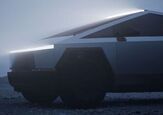
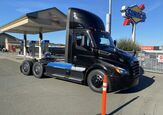
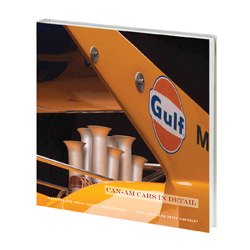

















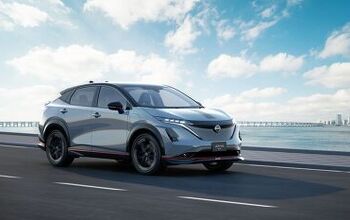
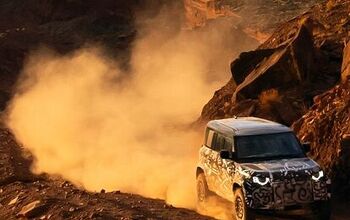
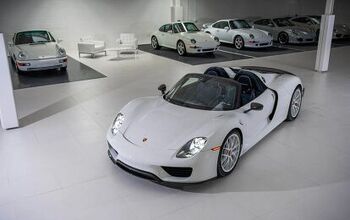
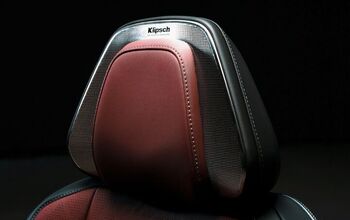
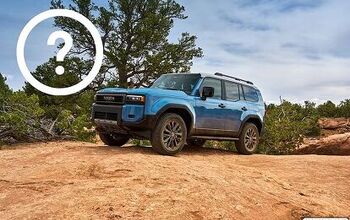

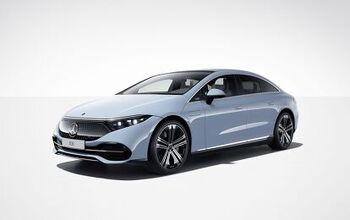

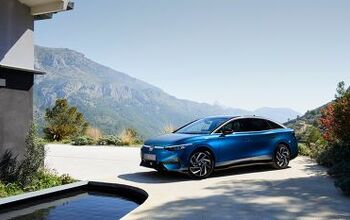



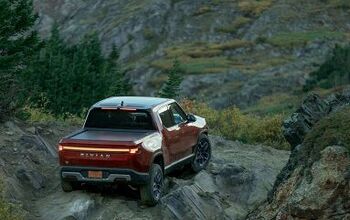

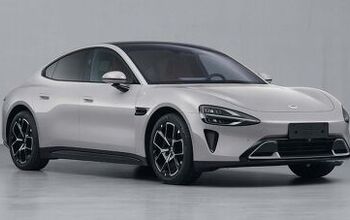
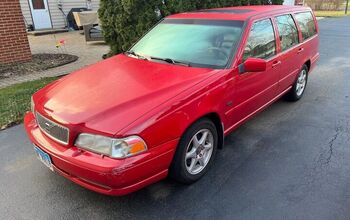

Comments
Join the conversation
BTU content would certainly contain speed, assuming the limits are set low enough. It essentially puts a mileage cap on the cars. I doubt you're going to get 1500 bhp cars running 200 mph if there's a hard limit of lets say 10 mpg (or diesel equivalent -- thus it's a BTU cap rather than mileage cap, if you just said 10mpg all cars would be diesel because of the higher BTUs of the fuel). An advantage of the cap would be to get manufacturers to start thinking of ways to cheat friction, some of which may work its way into our road cars. The trick would be to set the BTU cap high enough to get speeds up, but low enough to keep things relatively safe. I'm not so sure it would limit costs as well as speeds, as you can do all sorts of expensive things to get better mileage, with carbon fiber and whatnot.
I consider myself blessed that my father brought me to several Can-Am races when I was a wee lad. I saw many legends fly by me at speed with a thunder that will never be heard again on this planet.